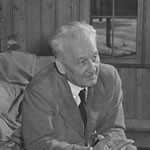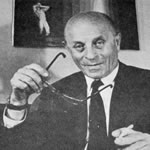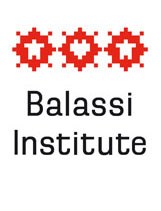 János Irinyi (Albis, 1817 – Vértes, 1895), chemist, inventor of the “noiseless” safety match. Irinyi studied chemistry at Vienna Polytechnic University. He invented the noiseless match when observing an experiment his professor demonstrated. In 1836, having conducted a long string of experiments of his own, he patented his innovation for a safe noiseless match, which involved changing the material for the tip of the match to phosphorous with potassium chlorate instead of lead dioxide. Irinyi sold his invention to a match manufacturer and spent the money on a research trip abroad, becoming a student at the famous Hohenheim Agricultural College in Berlin. Upon his return, he founded Hungary’s first match factory (literal translation ‘lighting stick factory’) which operated from several locations in Pest. Irinyi wrote numerous articles in the field of chemistry and played a significant role in the development of the academic language used by Hungarian chemists.
János Irinyi (Albis, 1817 – Vértes, 1895), chemist, inventor of the “noiseless” safety match. Irinyi studied chemistry at Vienna Polytechnic University. He invented the noiseless match when observing an experiment his professor demonstrated. In 1836, having conducted a long string of experiments of his own, he patented his innovation for a safe noiseless match, which involved changing the material for the tip of the match to phosphorous with potassium chlorate instead of lead dioxide. Irinyi sold his invention to a match manufacturer and spent the money on a research trip abroad, becoming a student at the famous Hohenheim Agricultural College in Berlin. Upon his return, he founded Hungary’s first match factory (literal translation ‘lighting stick factory’) which operated from several locations in Pest. Irinyi wrote numerous articles in the field of chemistry and played a significant role in the development of the academic language used by Hungarian chemists.
 Albert Szent-Györgyi (Budapest, 1893 – Woods Hole, Massachusetts, 1986), physician, biochemist. Szent-Györgyi received his medical degree in Budapest in 1917. He then travelled the world for more than ten years and received his doctorate in chemistry at Cambridge. Upon his return to Hungary, he became a professor and department head at the University of Szeged. During the 1930s, he succeeded in isolating vitamin C, and in 1936, achieved the same with flavonoids, known then as vitamin P. Szent-Györgyi also played a significant role in the discovery of the citric acid cycle. In 1937, he received the Nobel Prize for a contribution to physiology and medicine. Faced with political terror at home, in 1947, he moved to the United States, where he lived for nearly forty years. In the U.S., he concentrated his efforts primarily on the problems of muscle research and cell regulation, while also making significant contributions to cancer research. Szent-Györgyi wrote more than two hundred scientific studies and numerous important books over the course of his career.
Albert Szent-Györgyi (Budapest, 1893 – Woods Hole, Massachusetts, 1986), physician, biochemist. Szent-Györgyi received his medical degree in Budapest in 1917. He then travelled the world for more than ten years and received his doctorate in chemistry at Cambridge. Upon his return to Hungary, he became a professor and department head at the University of Szeged. During the 1930s, he succeeded in isolating vitamin C, and in 1936, achieved the same with flavonoids, known then as vitamin P. Szent-Györgyi also played a significant role in the discovery of the citric acid cycle. In 1937, he received the Nobel Prize for a contribution to physiology and medicine. Faced with political terror at home, in 1947, he moved to the United States, where he lived for nearly forty years. In the U.S., he concentrated his efforts primarily on the problems of muscle research and cell regulation, while also making significant contributions to cancer research. Szent-Györgyi wrote more than two hundred scientific studies and numerous important books over the course of his career.
 László József Bíró (Budapest, 1899 – Buenos Aires, 1985), Hungarian journalist and inventor. Bíró’s more than thirty successful, internationally recognized inventions include the ball-point pen, automatic transmission, steam-powered washing machine, and roll-on deodorant. Though he began his studies in the field of medicine, Bíró soon proved to be a true polyhistor. Between 1921 and 1938, he worked as a journalist, sculptor, painter, art critic, race car driver, stock broker, hypnotist, automobile dealer, and – of course – inventor. His most famous invention was the ball-point pen, patented in 1938 in more than 100 countries. In 1948, the patent for this invention was purchased by the Parker company. In the United States, the ball-point pen was also known as the ‘Biro pen’. Biro’s second most famous innovation was the automatic transmission.
László József Bíró (Budapest, 1899 – Buenos Aires, 1985), Hungarian journalist and inventor. Bíró’s more than thirty successful, internationally recognized inventions include the ball-point pen, automatic transmission, steam-powered washing machine, and roll-on deodorant. Though he began his studies in the field of medicine, Bíró soon proved to be a true polyhistor. Between 1921 and 1938, he worked as a journalist, sculptor, painter, art critic, race car driver, stock broker, hypnotist, automobile dealer, and – of course – inventor. His most famous invention was the ball-point pen, patented in 1938 in more than 100 countries. In 1948, the patent for this invention was purchased by the Parker company. In the United States, the ball-point pen was also known as the ‘Biro pen’. Biro’s second most famous innovation was the automatic transmission.
 János Neumann (John von Neumann), (Budapest, 1903 – Washington, 1957), mathematician who made the greatest impact on the 20th century. Neumann achieved results in nearly every branch of mathematics, discovering entirely new mathematical disciplines in the process. Outside of Hungary, he gained fame for achievements unrelated to mathematics: namely, for his work on the Manhattan Project and the development of the modern electronic computer. Neumann was a professor at Princeton University, and, later, at the newly inaugurated Princeton Institute for Advanced Studies (1933-1955). In its issue of December 24, 1999, the Financial Times hailed Neumann as “Man of the Century”.
János Neumann (John von Neumann), (Budapest, 1903 – Washington, 1957), mathematician who made the greatest impact on the 20th century. Neumann achieved results in nearly every branch of mathematics, discovering entirely new mathematical disciplines in the process. Outside of Hungary, he gained fame for achievements unrelated to mathematics: namely, for his work on the Manhattan Project and the development of the modern electronic computer. Neumann was a professor at Princeton University, and, later, at the newly inaugurated Princeton Institute for Advanced Studies (1933-1955). In its issue of December 24, 1999, the Financial Times hailed Neumann as “Man of the Century”.
 Ernő Rubik Jr. (Budapest, 1944), architect, toy designer, inventor. Rubik graduated from the Architectural Engineering Department of the Budapest Technical University in 1967, after which he continued his studies in the fields of sculpture and interior design at the College of Applied Arts, graduating in 1971. He worked as an architectural designer until 1975, when he returned to the College of Applied Arts to teach. In 1983 he started his own company, known as the Rubik Studio, where he designed furniture and toys. He was made an honorary university professor in 1987 and president of the Hungarian Academy of Engineers in 1990. He is honorary president of the latter institution to this day. Rubik’s name is linked to the invention of several logic-based toys, the most famous being his Rubik’s Cube (in Hungarian: Bűvös kocka or Magic Cube), which has achieved unparalleled international popularity since its first appearance in 1975.
Ernő Rubik Jr. (Budapest, 1944), architect, toy designer, inventor. Rubik graduated from the Architectural Engineering Department of the Budapest Technical University in 1967, after which he continued his studies in the fields of sculpture and interior design at the College of Applied Arts, graduating in 1971. He worked as an architectural designer until 1975, when he returned to the College of Applied Arts to teach. In 1983 he started his own company, known as the Rubik Studio, where he designed furniture and toys. He was made an honorary university professor in 1987 and president of the Hungarian Academy of Engineers in 1990. He is honorary president of the latter institution to this day. Rubik’s name is linked to the invention of several logic-based toys, the most famous being his Rubik’s Cube (in Hungarian: Bűvös kocka or Magic Cube), which has achieved unparalleled international popularity since its first appearance in 1975.






